In the packaging, printing, textile and home decoration industries, the hot stamping process is a key technology to enhance the added value of products and highlight the luxurious texture. As the core consumeable of the hot stamping process, the precision slitting equipment of hot stamping foil, its technical level directly determines the quality, utilization and even the performance of the final product.
The traditional hot stamping foil slitting machine is a typical product of the "manufacturing" era: the mechanical structure is the main one, highly dependent on the operator's experience and feel to adjust the tension, control the speed, and align the tool position. The production process is like a "black box", with large quality fluctuations, high scrap rates, and obvious efficiency bottlenecks. However, under the wave of Industry 4.0, a profound "intelligent manufacturing" revolution is rejuvenating these bulky machinery, embarking on a digital transformation path with data-driven, intelligent decision-making, and flexible production as the core.
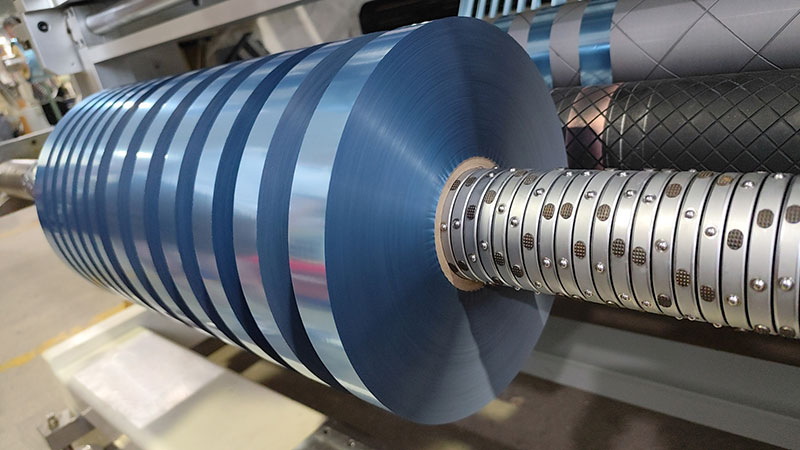
1. The dilemma of tradition: the challenge of the "manufacturing" era
1. High dependence on manual experience: the tension, speed, tool angle and other parameters of slitting are all dependent on the master's "ear, eye, eye, and touch", the talent training cycle is long, and the product quality consistency of different operators is difficult to guarantee.
2. Production Efficiency and Quality Bottlenecks: To avoid foil breakage and uneven trimming, machines often fail to operate at optimal speeds. Frequent tool and rewinding leads to excessive downtime and low overall equipment effectiveness (OEE).
3. "Black box" production, difficult traceability: There is a lack of data records in the production process. Once there is a customer complaint, it is impossible to accurately trace back which roll of raw materials and under which process parameters are produced, and can only be investigated on a large scale, which is costly.
4. Serious material waste: Due to trial and error, foil breakage in the process, uneven winding, etc., the loss of hot stamping foil waste (mostly expensive metal foil and electrochemical aluminum) is huge.
5. Single service model: After the equipment is sold, the contact between the manufacturer and the user is weakened. Fault repair is lagging behind, spare parts management is backward, and value-added services cannot be provided.
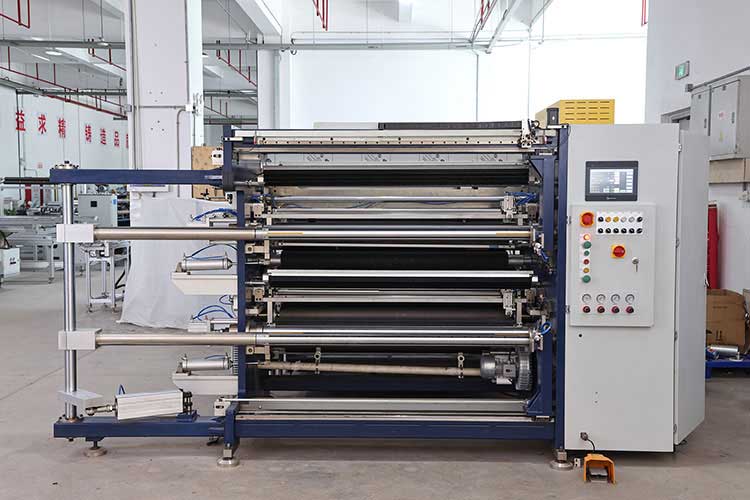
2. The path of transformation: towards the core technology of "intelligent manufacturing"
Digital transformation is not a simple "machine substitution", but through the integration of a series of digital technologies, the slitting machine is given the ability to "perceive, analyze, make decisions, and execute".
1. Introduction of "Digital Senses" (IoT and Sensing Technology)
◦ Install high-precision sensors at key parts: collect massive data such as unwinding/rewinding tension, spindle speed, tool temperature, vibration, and CCD visual detection of coil edge images in real time.
◦ Build device neural networks: Aggregate all sensor data to edge computing gateways or cloud platforms through IoT gateways to provide data fuel for subsequent analysis.
2. Construction of "Smart Brain" (Industrial Internet Platform and Big Data Analysis)
◦ Data aggregation and visualization: Real-time monitoring of equipment status, production progress, and energy consumption on the cloud platform or local SCADA system to achieve "black box" transparency.
◦ Process parameter optimization: Based on historical production data, machine learning algorithms are used to recommend the optimal tension and speed model (Recipe) for hot stamping foil of different materials and widths, and even realize adaptive adjustment to minimize start-up waste.
◦ Predictive maintenance: By analyzing the current and vibration frequency of the spindle motor, it can predict bearing wear, tool passivation and other faults in advance, and change "post-maintenance" to "pre-warning", greatly reducing unexpected downtime.
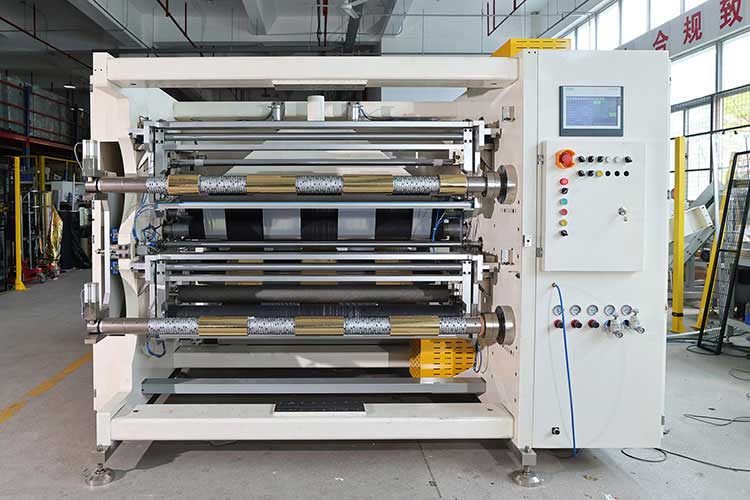
3. Upgrade of "Precision Execution" (Machine Vision and Automation)
◦ AI vision correction: The high-resolution CCD camera captures the edge of the coil in real time, quickly identifies deviations through AI algorithms, and drives the servo motor to perform real-time correction with micron-level accuracy to ensure smooth and neat slitting edges.
◦ Automatic tool change and tool position adjustment: With the visual positioning system, the automatic tool change and spacing adjustment are realized, shortening the changeover time and meeting the flexible production needs of small batches and multiple varieties.
◦ Robot integration: Integrated with AGV (automatic guided transport vehicle) and robotic arm to realize automatic feeding of raw material rolls, automatic unloading, labeling and packaging of finished product rolls, moving towards a "black light factory".
4. The transformation of "ecological win-win" (servitization extension and business model innovation)
◦ Equipment as a Service (DaaS): Instead of just selling equipment, manufacturers charge per meter cut or time on the machine. Its profit model is closely tied to helping customers succeed, forcing itself to provide more stable and efficient equipment.
◦ Remote O&M and value-added services: Engineers can remotely assist and guide customers through AR maintenance, and the cloud platform can monitor the health status of global equipment, proactively push spare parts reminders and software upgrades, and create continuous service revenue.
3. Future Perspective: The Value and Prospects of Digital Transformation
The digital transformation of hot stamping foil slitting machine ultimately brings about an upgrade of the whole value chain:
• For equipment manufacturers: Transform from a traditional machinery supplier to an integrated solution provider, increase product added value and customer stickiness, and open up a new revenue growth curve.
• For hot stamping foil manufacturers: stable and reliable high-quality products are obtained, the comprehensive cost (material, labor, energy consumption) is greatly reduced, and the market response speed and competitiveness are improved.
• For end users (e.g. printers): Using higher quality and more consistent slitting hot stamping foil means fewer process failures, higher hot stamping yield rates, and more stunning product results.
Looking ahead, with the further maturity of 5G, digital twin and AI technologies, the future "intelligent manufacturing" slitting machine will be more intelligent. Engineers can create a digital twin of each physical device in the virtual world, and perform full-process simulation and parameter optimization before new products are put into production, achieving "zero trial and error" production. The entire industrial chain will be more closely connected under the link of data, and truly realize the perfect leap from "manufacturing" to "intelligent manufacturing".
Summary: This transformation road is an innovative road that uses data to open up isolated links, algorithms to optimize production decisions, and connections to reshape business models. It gives the cold steel machinery "wisdom", which not only improves efficiency and quality, but also profoundly changes the industrial ecology and value distribution method, providing a vivid footnote for the high-quality development of China's manufacturing industry.



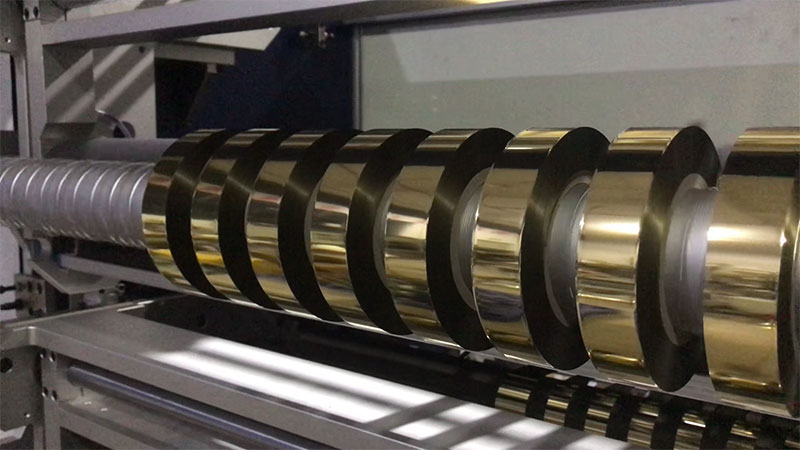
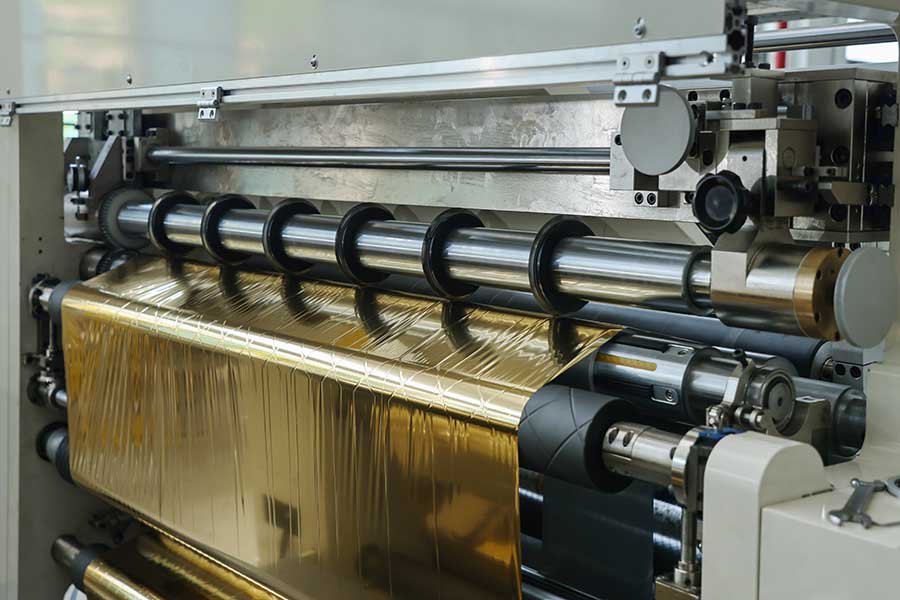
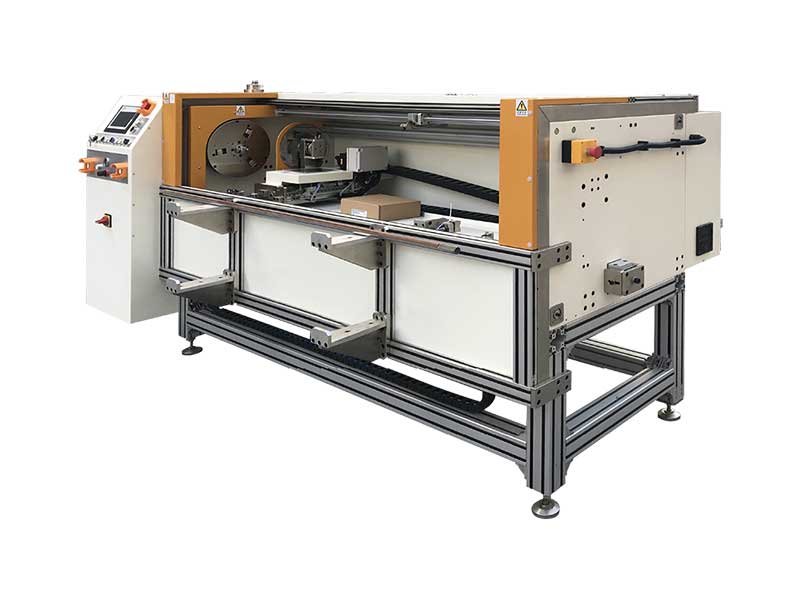 Automatic Foil Roll Cutting Machine
Automatic Foil Roll Cutting Machine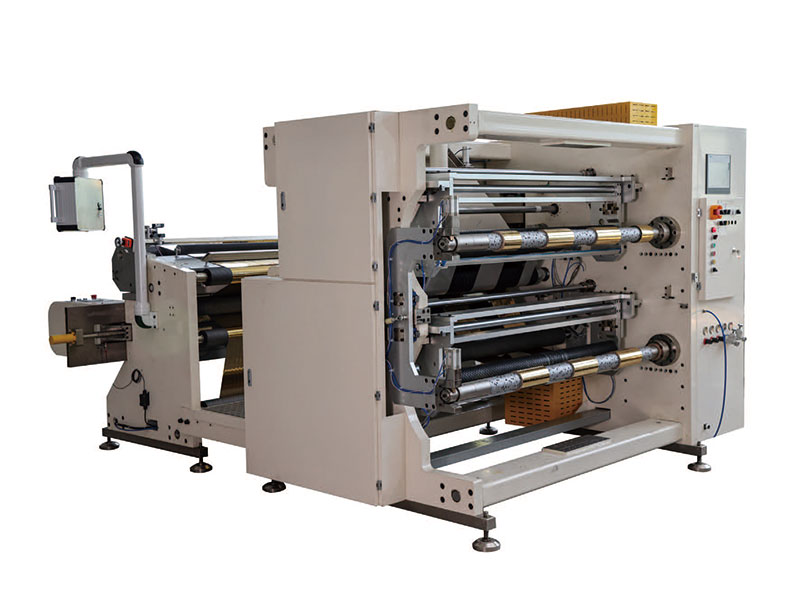 1400mm Hot Stamping Foil Slitting Machine
1400mm Hot Stamping Foil Slitting Machine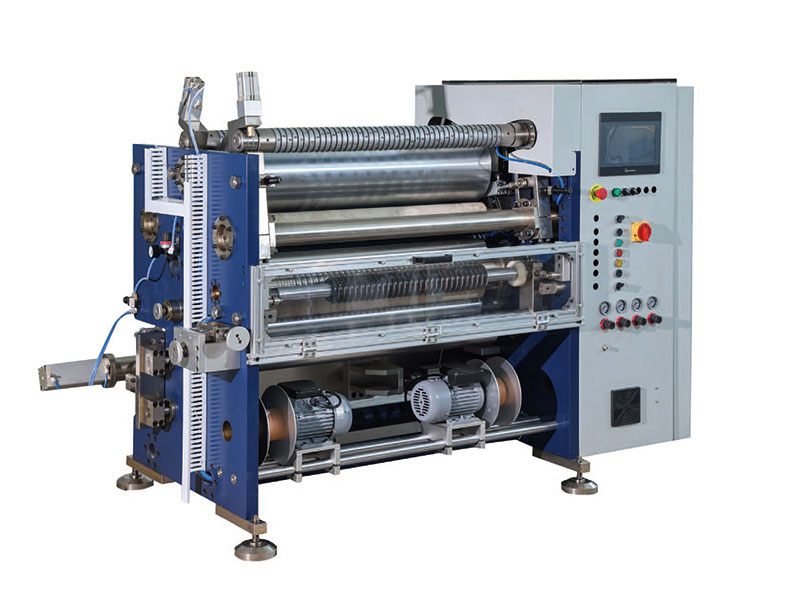 800mm Hot Stamping Foil Slitting Machine
800mm Hot Stamping Foil Slitting Machine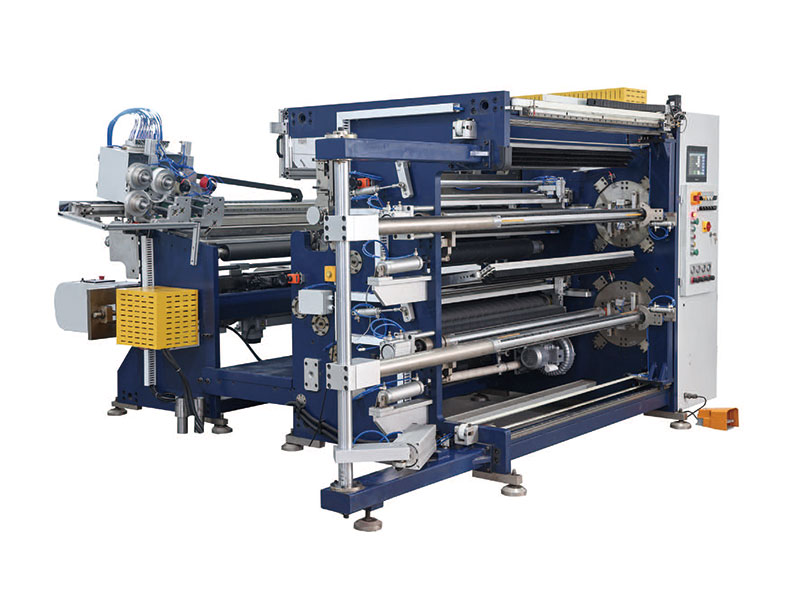 1350mm Hot Stamping Foil Slitting Machine
1350mm Hot Stamping Foil Slitting Machine Manual Foil Roll Cutting Machine
Manual Foil Roll Cutting Machine 1350mm/1600 Foil Slitting Machine
1350mm/1600 Foil Slitting Machine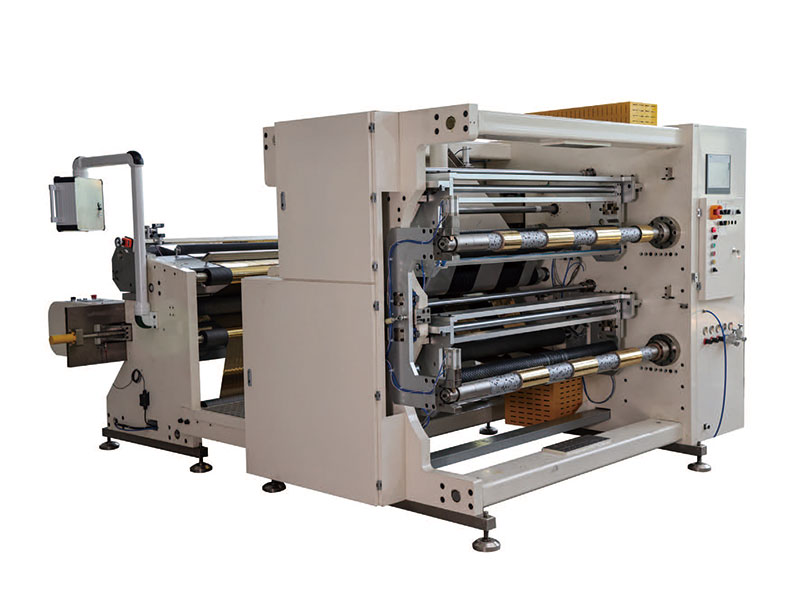 1400mm Copper Foil Slitting Machine
1400mm Copper Foil Slitting Machine 1600mm Foil Slitting Machine
1600mm Foil Slitting Machine

